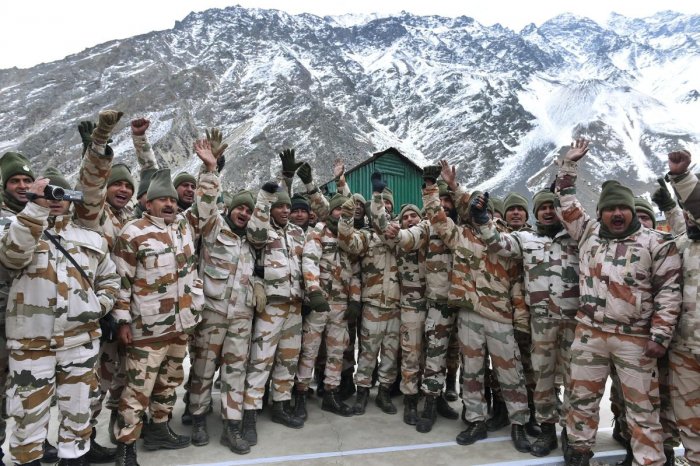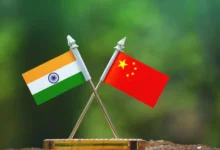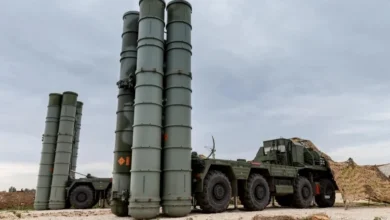Cabinet Approves Sending 9,000 More ITBP Troops To The China Border

- China makes us accept that the Chinese were in these areas because Indian Security Forces (ISFs) and civilians haven't been there in a long time.
- The paper says that the PLA has used the buffer zones to its advantage in the de-escalation talks by putting its best cameras on the highest peaks and watching how the Indian forces move.
China still has a lot of troops close to the Line of Actual Control (LAC), and tensions along the Sino-Indian border aren’t going away. On Wednesday, the cabinet approved adding nearly 9,000 troops to the Indo-Tibetan Border Police (ITBP). Sources say that for this to happen, seven new battalions and a new sector headquarters will need to be made.
The ITBP is the first line of defence on the China border, this will strengthen the security grid on the LAC. In the last few years, Indian and Chinese forces have fought many times in Eastern Ladakh and Arunachal Pradesh, and Indian forces are still not allowed to patrol in many of their usual spots in the Depsang plains and the Charding Nalla region of Ladakh. It will also help the ITBP, which has 100% deployment for most of the year, give its staff a chance to rest, heal, and get better training.
“The ITBP has had this idea for a long time. It has been on the table since 2013 or 2014. At first, it was planned to make 12 new battalions, but that number has now been cut to seven. “This is related to the decision to add more border outposts and staging camps along the LAC,” an official from the home ministry said.
The decision was made because of fights between Indian and Chinese forces in the Yangtze region of Tawang, Arunachal Pradesh, in December of last year. Several Indian troops were hurt in those fights. Army chief Manoj Pandey has said many times, both before and after this incident, that the situation on the border between China and India is “stable but unpredictable.”
Since April 2020, Indian and Chinese forces have been fighting each other in Ladakh. This had also caused fights between the two groups in June 2020 in the Galwan valley in the eastern part of Ladakh. Since then, diplomatic and military talks have helped get people to stop fighting at five of Ladakh’s seven conflict points. But both sides are still keeping a lot of troops in the theatre.
In November of last year, Pande said that even though there was disengagement, there was no sign of Ladakh getting less dangerous. “As far as the number of PLA troops goes, there hasn’t been a big drop,” he said.
Pande then said, “When it comes to building infrastructure, the Chinese don’t stop. There are roads, helipads, airfields, and even roads that go all the way up to the passes. The G 695 is one of the most important changes. The road or highway that runs parallel to the LAC will give him [China] the ability to not only move forces forward but also switch forces from one sector to another.
In a paper presented at the recent DGPs conference, which was attended by Prime Minister Narendra Modi and Home Minister Amit Shah, it was said that India had lost access to 26 of its 65 patrolling points on the LAC in Ladakh.
“Later, China makes us accept that the Chinese were in these areas because Indian Security Forces (ISFs) and civilians haven’t been there in a long time. This causes the part of the border that is controlled by ISFs to move towards the Indian side.
This creates a “buffer zone” in all of these pockets, which means that India loses control over these areas. The PLA’s method of taking land inch by inch is called “slicing a salami,” the paper said.
The paper says that the PLA has used the buffer zones to its advantage in the de-escalation talks by putting its best cameras on the highest peaks and watching how the Indian forces move.
“This strange situation can be seen at Black top and Helmet top mountains in Chushul, at Demchok, at Kakjung, at Gogra hills in Hot Springs, and at Depsang plains near Chip Chap river. With the “salami slicing” strategy, they don’t want us to move even in the buffer zone because they say it’s “their” area of operations.
They also want us to move back to make more “buffer” areas. This happened with Y nallah at Galwan, where we had to move back to Camp 01 because we didn’t control the higher posts in charge of Y nallah. At Chushul, the BPM hut near the airfield has become the de facto LAC, and Nilung nallah at Demchok has been cut off, the paper said.







Facebook Comments